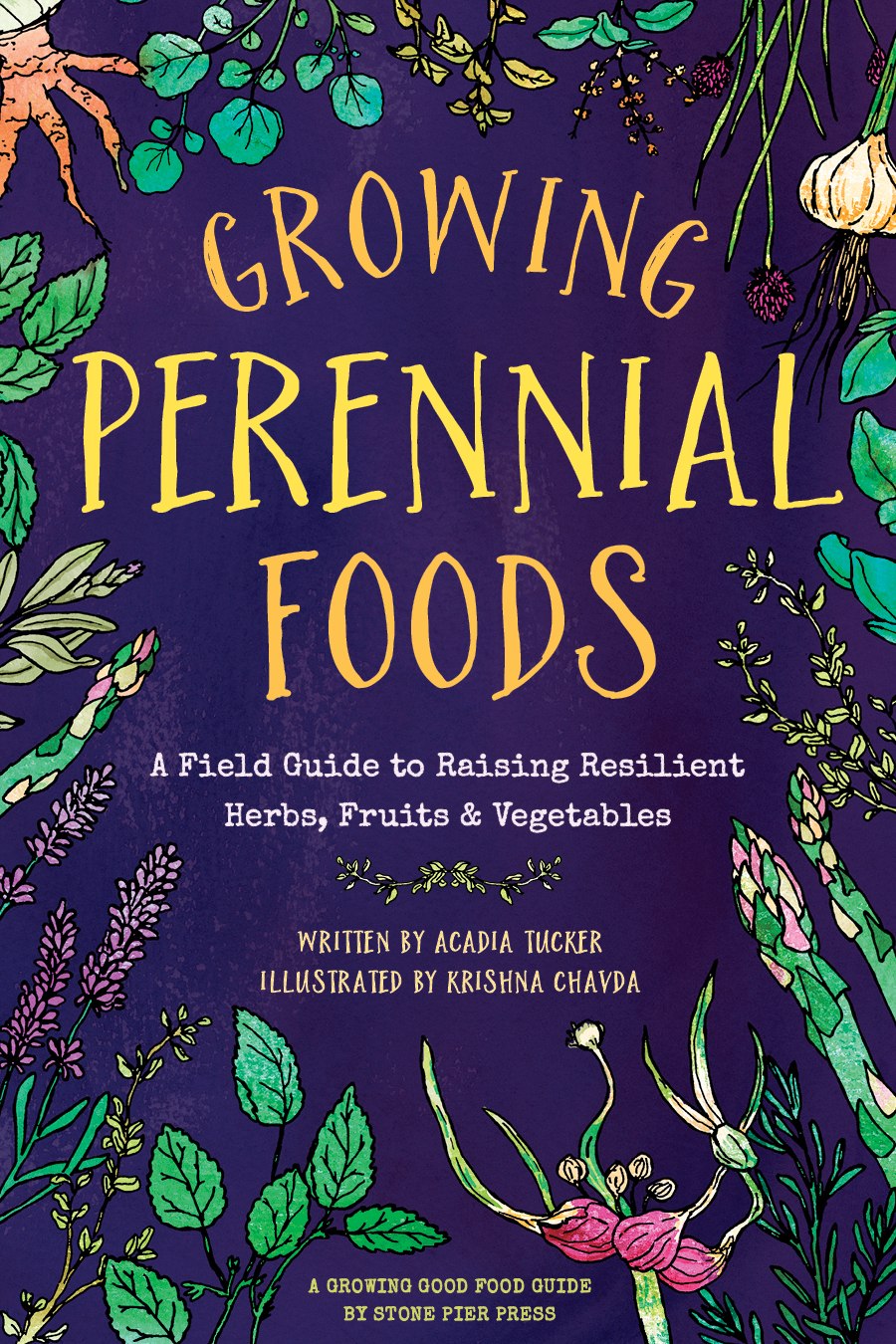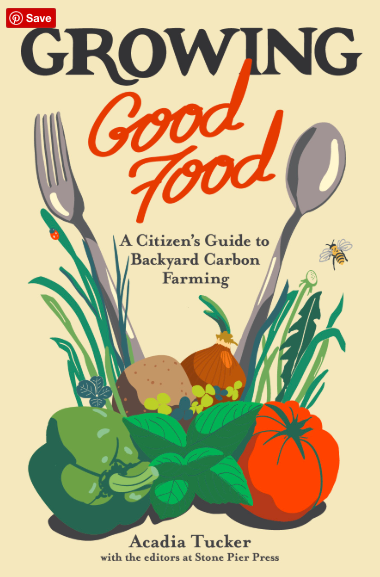
When I first started growing food, the farm I managed in the Pacific Northwest had patches of sandy, dry soil interspersed with waterlogged, hard packed clay. During the scorching hot summers, my thirsty plants shriveled. When the skies dumped rain the water pooled, flooding my crops. Those first couple of years on the farm were my first experience dealing with climate extremes, and my soil was not equipped for the job.
Worried about the outlook for my farm, I returned to school to study soil and water management, and did a deep dive into how global warming is changing the way we raise food. The experience helped turn me into a very different kind of grower.
When I returned I started covering my beds every spring with a generous layer of compost. On top of that, I laid down another protective layer of straw or grass clippings mixed with shredded leaves, to keep the compost from washing away and prevent new weeds from sprouting. Over the course of the growing season I dosed my soil with this potent combination as needed. It didn’t take time to notice a difference.
In just over a year, the rich organic material had converted the light brown, sandy soil into a dark brown, fluffy bed for my plants. The hard packed clay loosened and become more friable. Water sank instead of sitting on the surface. I swear my food is tastier and more resilient. But what really excites me about my job as a soil farmer is knowing the role it plays in cooling our environment.
The more organic matter in the soil, the more excess carbon dioxide it can absorb. Increasing the carbon stored in soil helps to maximize photosynthesis so plants can draw down even more carbon dioxide and trap it underground.
Moreover, soil rich in carbon feeds mycorrhizae, a vast network of fungi that releases glomalin. Glomalin is a sticky, gum-like substance that binds together particles of sand, silt, and clay, creating a soil structure that conserves moisture and holds onto nutrients. Plants raised in favorable conditions like this, with easy access to moisture and nutrients, grow sturdier and more resilient. This positive cycle is how nature works when we don’t interfere.
By adopting soil-building, regenerative practices, farms could remove carbon dioxide from the atmosphere at a rate of about one ton of carbon dioxide for every acre, according to data reviewed by soil expert Eric Toensmeier. The potential benefits are enormous, as spelled out in a 2014 study from Rodale Institute. Citing data from farming systems and pasture trials, it concludes that we could sequester more than 100 percent of annual CO2 emissions worldwide if we start growing food this way.
But even if you have nothing more than a sliver of land you can do something right now to battle the most significant ecological threat we’ve ever faced. Carbon farming expert Eric Toensmeier estimates that his own tiny carbon-rich backyard garden, about a tenth of an acre, can offset the carbon emissions of one American adult per year. So let’s all start nurturing the soil. It’s time.
Here’s how you can build (and maintain) healthy soil
Test your soil
The occasional soil test is a helpful gauge of what’s working and whether you need to pile on more compost or other amendments, so I’ve built soil testing into my annual routine and recommend you do, too. If you’re starting a garden from scratch, taking measure of your soil’s acidity and nutrient levels can get you off to the right start. Most state universities can test for acidity, organic matter, and nutrients. That said, testing the quality of your soil isn’t absolutely necessary for regenerative gardeners if you treat it with a healthy dose of compost and mulch every year. And if getting a test seems like a hassle, and stands in the way of you getting started on your own garden, don’t bother. Better to just get started.
You can easily keep tabs on the health of your soil each season by grabbing a handful of moist dirt from your garden and squeezing it. If it crumbles, your soil is too dry and sandy and you’ll have to add more organic matter. If it holds its shape even after some poking, the soil contains too much clay and you’ll have to mix in peat, compost, or lime to break it up and improve drainage. If your clod holds its shape and falls apart only after poking it, then your probably have rich, well-drained loam soil, which most plants love.
Feed your soil
Adding organic matter is the most important step you can take to build healthy soil. Organic matter is anything living or dead, animals or plants, and the perfect food for soil organisms. So, I feed my soil with compost.
Throughout the season I build up my compost pile with straw, grass clippings, leaves, kitchen scraps, plants, pretty much any raw organic material, and let it sit. This creates a breeding ground for bacteria and microbes that make quick work of breaking down the materials into nutrients that plants need. The result is black gold packed with organic matter and plenty of the trace minerals - like iron, zinc, and manganese - that are left out of synthetic fertilizers.
Each spring I spread one to two inches of this amazing stuff over the entire garden, gently mixing it into the first few inches of the soil. But if you forget to feed your soil during the busy spring it’s fine to add it later on, and particularly poor patches of land benefit from getting it throughout the season.
Protect your soil
Mulch is a carbon farmer’s best friend. Spreading mulch over the soil each year accomplishes many goals at once. For starters, mulch helps trap water so you won’t need to water your plants as much. Mulch also fights against weeds so you spend less time hunched over pulling them out of the ground (you can tell how much I like weeding) and more time enjoying the fruits of your labor. But the most important aspect of mulch is the way protects the soil.
I add it in the spring, to prevent the healthy soil I’ve worked so hard to build from washing away. And in the fall, to keep nutrients in the ground and protect plant roots from becoming exposed and vulnerable to drying out and freezing in the winter.
Mulch works best when applied in an even layer, two to four inches deep. Make sure to keep it a few inches from the base of your plants so it doesn’t rot them. I spread wood chips along my pathways to prevent hard-packed soil, and a layer of shredded leaves and grass clipping or straw on my plant beds. But you can use pretty much anything from plain cardboard or newspaper to coco fiber or shredded tree waste from your local municipality. I much prefer organic materials, which can be broken down by soil microbes, rather than synthetic mulches like landscape fabric, which does nothing for soil health. The best organic mulches are readily available, cheap, and easy to spread.
Have a gardening question? Send it to: ClimateVictoryGarden@GreenAmerica.org.
Or, post it on the Climate Victory Garden facebook group.
Visit our FAQ page to learn practical skills and become more familiar with carbon sequestration and growing healthy food (and soil!).
Written by Acadia Tucker, a regenerative farmer, climate activist, and author of Growing Perennial Foods: A field guide to raising resilient herbs, fruits & vegetables and Growing Good Food: A citizen's guide to backyard carbon farming.





